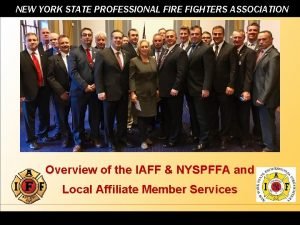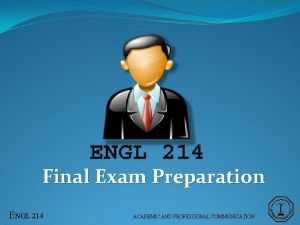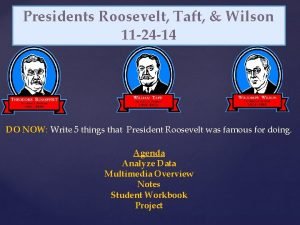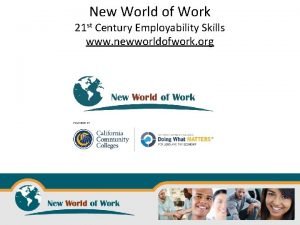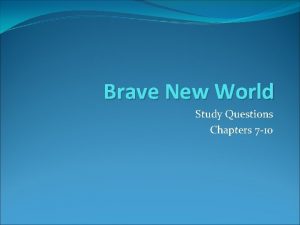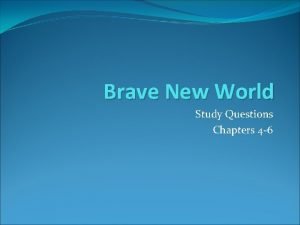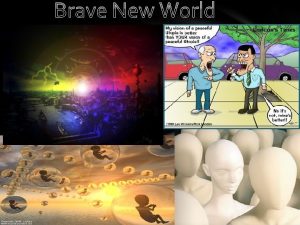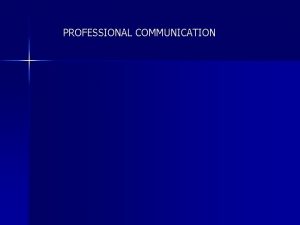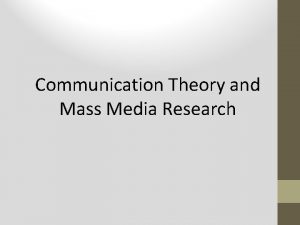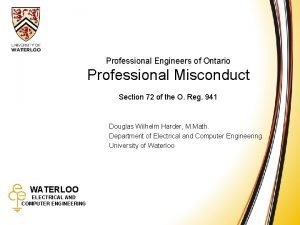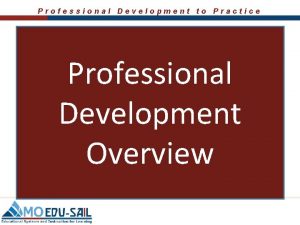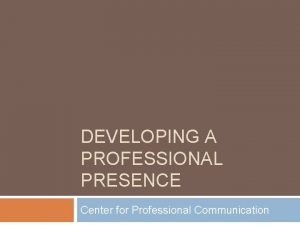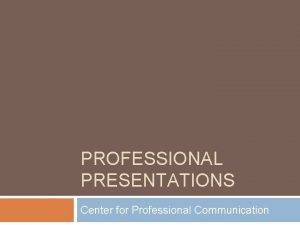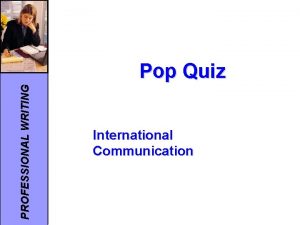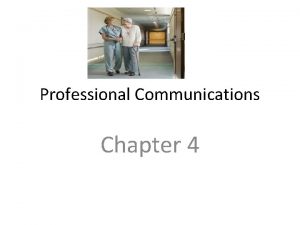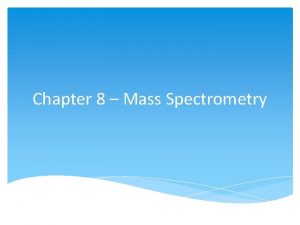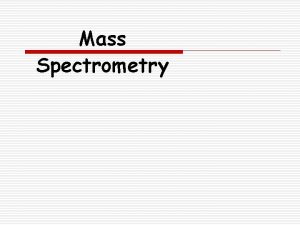World of Professional Mass Communication 1 New mass














































- Slides: 46


World of Professional Mass Communication 1. New mass media and new forms of older media will always arise.

World of Professional Mass Communication 2. History shows us that as new media arise, the old media are NOT destroyed.

World of Professional Mass Communication 3. Evidence of this specialization, which is often introduced with new technologies, is everywhere.

World of Professional Mass Communication 4. Another basic principal today is GLOBAL COMMUNICATION.

What about education for the people who work in mass communication?

U. S. journalism schools have become more popular 182, 180 11, 000

The bedrock of a profession or field aspiring to become a profession is a body of knowledge that can be transmitted to people who enter the field.

Evidence of journalism education’s success 85% of the new hires on daily newspapers are now journalism graduates.

Journalism-mass communication enrollments are growing in U. S. universities. 182, 180 147, 000 71, 600

Fields with the Largest Enrollments at UNC-CH Field Number of Majors 1. Business Administration 2, 230 2. Journalism and Mass Communication 1, 616 3. Biology 1, 538 4. Psychology 1, 231 Figures are for Spring 2002 from the Registrar’s Office. They include freshman and sophomore pre-majors through graduate students.

Enrollment Trends at UNC-CH: Undergraduate Units 1971 1994 2002 179 447 838 659 368% 0 176 104 N/A 159 278 304 145 91% Arts & Sciences 3, 848 5, 942 5, 529 1, 681 44% General College 5, 761 6, 836 6, 883 1, 122 19% 69 90 59 -10 -14% Business Admin. 858 517 608 -250 -29% Continuing Studies 727 725 403 -324 -45% Dentistry 125 59 64 -61 -49% Education 883 340 168 -715 -81% 12, 609 15, 410 14, 960 2, 351 19% Jour. & Mass Comm. Public Health Nursing Medicine Total Change % Chg. Figures are from the Registrar’s Office. Change is from 1971 to Spring 2002.

Enrollment Trends at UNC-CH: Graduate Units 1971 1994 2002 Change % Chg. Medicine 134 534 634 500 373% Jour. & Mass Comm. 24 88 107 83 346% Nursing 51 164 197 146 286% 263 561 689 416 162% 28 67 63 35 125% 468 885 907 439 94% 45 45 80 35 78% Info. & Lib. Science 162 214 254 92 57% Social Work 153 213 232 79 52% Continuing Studies 446 1, 313 631 185 41% 2, 250 2, 464 2, 065 -185 -8% 549 273 337 -212 -39% Business Admin. Pharmacy Public Health Dentistry Arts & Sciences Education Total 4, 573 6, 821 6, 196 1, 613 35% Figures are from the Registrar’s Office. Change is from 1971 to Spring 2002.

Enrollment of majors in the School has increased 67% since 1990. 945 565 These figures are juniors, seniors and graduate students.

Carroll Hall School of Journalism and Mass Communication

The School moved to Carroll Hall in July 1999. • Tripled our usable space. • Enabled us to add new activities and facilities: – Television studios. – “Carolina Week, ” a 30 -minute news magazine. – Executive Education program. – Charles Kuralt Learning Center. – Park Library.

Technology Infrastructure • 11 computer labs – 5 computer classrooms • 3 Macintosh classrooms for photojournalism, multimedia production, graphic design, layout and editing. • 2 PC classrooms for news writing, editing and multimedia production. – Mac and PC Multimedia lab • State of the art hardware and software for multimedia production. – Research lab with quantitative and qualitative analytic software. – Open PC lab with software used in all School classes. – Library PC labs. • Audio and video editing suites for electronic journalists. • TV studio.

Background • First journalism course taught in 1909 -10 (English). • Department of Journalism formed in 1924. • School of Journalism formed in 1950. • Became the School of Journalism and Mass Communication in 1990.

The School’s Reputation • “Exceptionally well-balanced professionalacademic approach that makes it arguably the best all-around program in the country. ” (1997 re-accreditation report. ) • Twenty-three former students and faculty members have won or been a major part of 26 Pulitzer Prizes.

The School’s Reputation • Nine faculty members and three graduate students have won all-campus teaching awards. • Ten of the 22 UNC-CH Favorite Faculty Awards for 2000 for the whole campus went to School faculty members.

Our Bywords • Fair • Full • Accurate

News-Editorial Journalism Sequence • Oldest and core sequence in the School. • Enrollment constant although percentage of students is less than 20 years ago. • Prepares students for careers in newspapers or magazines. • Core courses: Newswriting, reporting, editing, electronic information sources, law and ethics. • Courses emphasize full, fair and accurate reporting and writing. • News-ed students' success in Hearst competition. • Graduates working at The New York Times, Wall Street Journal, USAToday, Chicago Tribune--all over the U. S. and around the world.

Advertising Sequence • Second-largest sequence. • Graduates work in creative, production, sales, research, media and management. Campaigns developed by alumni include Nike, Saturn, M&Ms, Pizza Hut, ESPN, Mc. Donalds, Audi and Microsoft. • Faculty include practitioners with experience in more than 40 national brands, as well as academics with significant experience in research and national leadership in academic organization. • Direction of curriculum includes teaching new disciplines of sponsorship, promotion, direct and interactive as well as traditional advertising techniques.

Public Relations Sequence • Became full-fledged sequence in 1990. • Now largest sequence in School. • Course of study combines practical and theoretical aspects of public relations. • All public relations courses contain servicelearning components. • Graduates find jobs in a number of sectors, including government, nonprofit, corporate and agency work.

Visual Communication Sequence • Sequence Options – Graphic Design – Multimedia – Photojournalism

Electronic Journalism Graduates at CBS, CNN, ABC, NBC and others.

Career Services • The School’s full-time career services director works closely with students in finding internship opportunities and quality entry-level jobs. The career services director works closely with friends and alumni seeking new jobs. • Students are encouraged to meet regularly with the career services director to fine-tune career plans. Students receive critiques of résumés and cover letters and get coaching on how to network with professionals in their career fields.

Career Services • This school year 29 media outlets have conducted on-campus recruiting visits. Among the companies: The Washington Post, St. Petersburg Times, Fairchild Publishing, ICF Consulting and ESPN. • Students have already been offered internships at The Washington Post, The Dallas Morning News, St. Petersburg Times, The Wall Street Journal online edition, the National Hockey League and Young & Rubicam advertising, among others. • Last year students accepted jobs at a range of media companies such as Foote Cone & Belding Advertising in New York; CNN; First Union Bank; The Outer Banks Sentinel; The Times-Picayune in New Orleans; Conde Nast Publications; Fleishman-Hillard and Schwartz Public Relations. Most graduates seek jobs along the East Coast and Southeast.

Graduate Program Reputation “One of the country’s very best programs. ” -1997 ACEJMC accreditation report “Unquestionably, one of the finest in the country. ” “The School’s Ph. D. program is regarded as one of the best in the country. ” -1997 UNC-CH Graduate School review Facts and Figures Spring 2001 enrollment: 2000 graduates: 2001 applications: 48 Ph. D. students; 50 M. A. students 14 Ph. D. , 22 M. A. 55 Ph. D. , 163 M. A.

Graduate Program • M. A. Program – Two tracks: • Professional – emphasis on development of professional skills, prepares students for an array of mass communication jobs. • Mass Communication – emphasis on research, prepares students for doctoral studies or positions in teaching, commercial research or specialized reporting.

Graduate Program • Ph. D. Program • Individualized, interdisciplinary programs of study based on student interests and needs. • Prepares graduates for academic careers or research positions in mass communication industries, advertising agencies, market- and opinion-research firms, business or government.

Graduate Program Park Fellows – Established in 1997 – 14 Park M. A. Fellows selected each year, two years of funding • Annual stipend of $10, 000 • Full tuition, fees and health insurance • $2, 000 per year for travel and research – Ten Park Ph. D. Fellows selected each year, three years of funding • Annual stipend of $18, 500 • Full tuition, fees and health insurance • $2, 000 per year for travel and research

Graduate Program • Important international programs: – Monterrey Tech in Mexico City. – Eritrea. – Russia – Brazil – Chile

Graduate Program • Sampling of student achievements – 30 research papers presented at the 2001 Southeast Regional Colloquium of the Association for Education in Journalism and Mass Communication. – 7 of the 11 top awards at the Regional. – 25 papers presented at the 2000 AEJMC Convention in Phoenix. – Tanner T. A. Awards in 2000 and 2001. – Two “debut” awards at the 2000 Broadcast Education Association conference. – A National Mark of Excellence Award from the Society of Professional Journalists.

Development and Alumni Affairs • We have more than 7, 100 graduates from our School. • There are 3, 657 alumni living in North Carolina. • Our alumni live in all 50 states, the District of Columbia, two U. S. territories and 29 countries.

Development and Alumni Affairs • The Development and Alumni Affairs Office in the School serves to enhance relations and promote communication with alumni and friends. • Generous alumni and friends have helped us raise more than $5 million in private funds to pay for renovating and equipping Carroll Hall. • As of Feb. 5, the School reached 40% of its overall “Carolina First” campaign goal of $25 million.

Development and Alumni Affairs • JAFA (Journalism Alumni and Friends Association) enables alumni and friends to participate actively in School affairs, fosters camaraderie and provides the opportunity for them to contribute to the School’s well-being. • Regional chapters of JAFA are active in Washington, D. C. , Atlanta, Charlotte, Chicago, Research Triangle Park, Philadelphia and New York City.

Other School Activities • Extensive outreach to N. C. high schools. • Important international programs (including Mexico, Russia, Chile and Cuba). • Mid-career educational programs for professionals.

Executive Education Program Launched in 1998 with a grant from the School of Journalism and Mass Communication Foundation. The program offers day-long to week-long continuing education workshops to journalism, public relations, marketing and design professionals. Seminar topics have included: Covering the North Carolina Latino Community (for print and broadcast journalists) Redefining Marketing (a course in integrated marketing communication strategy) Public Relations on a Shoestring (for small business and nonprofit organizations) Healthcare Advocacy Through Media Relations (for healthcare professionals) The Business of Sport (for sports marketing and media professionals).

Summary The best journalism-mass communication program in the country.

Journalism and Mass Communication More emphasis will be placed on research and on ways to use new technologies to increase excellence in reporting, editing, photojournalism, advertising, broadcast journalism, graphics, public relations and all parts of what we broadly define as mass communication.

Journalism and Mass Communication Graduate education will draw an even larger portion of our attention and resources.

Journalism and Mass Communication Continuing education will become even more important through an array of workshops and seminars.

Journalism and Mass Communication Each journalism school should educate students in processing information concerning specialties of the geographic region.

Journalism and Mass Communication Journalism should not attempt to be all things to all people.

Journalism and Mass Communication Fortunately for those of us working in journalism and mass communication, the future looks bright, indeed.
 Old world monkey vs new world monkey
Old world monkey vs new world monkey Pumpkin new world or old world
Pumpkin new world or old world New york state professional firefighters association
New york state professional firefighters association Anything that prevents clear effective communication
Anything that prevents clear effective communication Engl 214
Engl 214 Chapter 1 professional communication
Chapter 1 professional communication Punctuating split speech
Punctuating split speech New york, new jersey, pennsylvania, and delaware
New york, new jersey, pennsylvania, and delaware New oil and new wineskin
New oil and new wineskin Movie new hartford ny
Movie new hartford ny Articles of confederation strengths
Articles of confederation strengths New-old approach to creating new ventures
New-old approach to creating new ventures New marketing realities
New marketing realities New years old is new again
New years old is new again New classical macroeconomics
New classical macroeconomics Chapter 16 toward a new heaven and a new earth
Chapter 16 toward a new heaven and a new earth Both new hampshire and new york desire more territory
Both new hampshire and new york desire more territory New classical and new keynesian macroeconomics
New classical and new keynesian macroeconomics Comparing the progressive presidents
Comparing the progressive presidents World politics in a new era
World politics in a new era The columbian exchange graphic organizer
The columbian exchange graphic organizer New world
New world Nay but to live in the rank sweat meaning
Nay but to live in the rank sweat meaning New world of work 21st century skills
New world of work 21st century skills New world drinks columbian exchange
New world drinks columbian exchange Chapter 37 new conflagrations world war ii
Chapter 37 new conflagrations world war ii Brave new world chapter 16
Brave new world chapter 16 Brave new world chapter 7 questions
Brave new world chapter 7 questions Chapter 4 brave new world
Chapter 4 brave new world Brave new world chapter 1
Brave new world chapter 1 Mitsima
Mitsima Bottling room brave new world
Bottling room brave new world Pfitzner y kawaguchi
Pfitzner y kawaguchi Brave new world history is bunk
Brave new world history is bunk Brave new world chapter 7-10 summary
Brave new world chapter 7-10 summary Brave new world ch 11
Brave new world ch 11 What are the feelies in brave new world
What are the feelies in brave new world Brave new world audiobook chapter 3
Brave new world audiobook chapter 3 Castes in brave new world
Castes in brave new world Brave new world castes
Brave new world castes Brave new world caste system
Brave new world caste system The feelies
The feelies Boxer rebellion ap world history
Boxer rebellion ap world history New world england
New world england Malpais brave new world
Malpais brave new world Monroe doctrine cartoon meaning
Monroe doctrine cartoon meaning Brave new world setting
Brave new world setting


